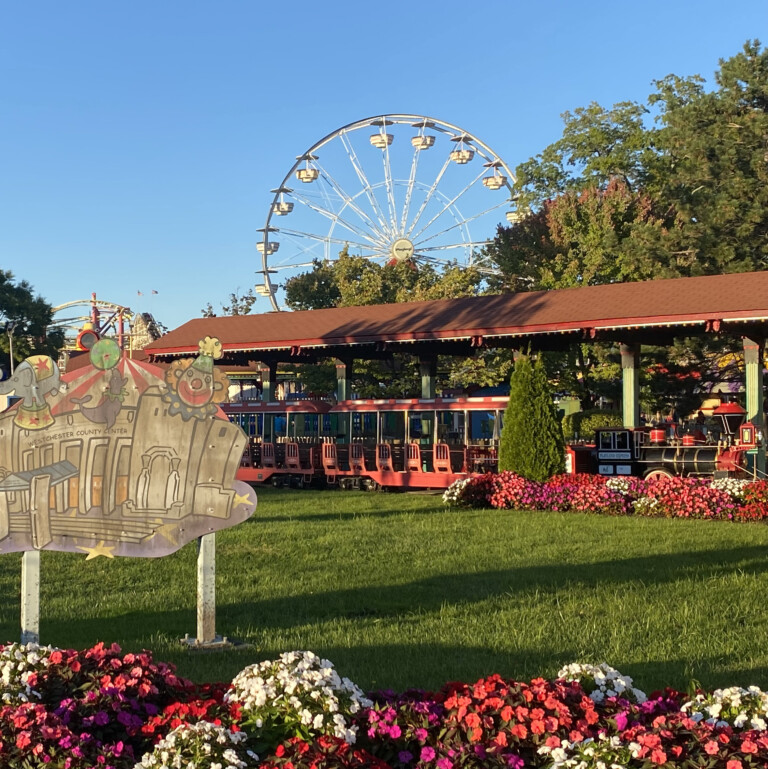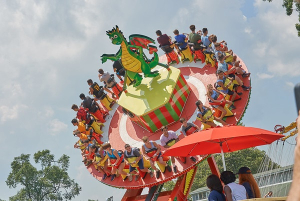Westchester Boss to Sign Playland Deals with SPI and Museum Tuesday
Clutch and grin pictures will hit the news Tuesday evening and Wednesday as County Boss Astorino signs Rye Playland deals with Sustainable Playland and the Westchester Children’s Museum. The keys to Playland will get handed over for next season.
What do you think of the deals? leave a comment below.
Here are the details from the county machine:
ASTORINO TO SIGN TWO MAJOR AGREEMENTS TUESDAY FOR REINVENTION OF PLAYLAND
Contracts cover Westchester Children’s Museum and Sustainable Playland
Westchester County Executive Robert P. Astorino will sign two major Playland agreements on Tuesday, July 23, that are designed to preserve the Dragon Coaster and other iconic rides, protect taxpayers and position the 100-acre park in Rye as a year-round destination for family fun.
The signing ceremony will take place on the Playland Boardwalk at 11 a.m. (In the event of rain, the ceremony will be inside the Westchester Children’s Museum’s new home on the Boardwalk.) Astorino will be joined by Corinne Zola, president of the museum, and by Kim Morque, president of SPI.
• Astorino will sign an asset management agreement for Sustainable Playland Inc. (SPI) to operate the park. Terms call for SPI to invest $34 million in the park and manage all vendors.
• Astorino will also sign the lease with the Westchester Children’s Museum for the museum to use one of the renovated bathhouses on Playland’s boardwalk as its home. As part of the agreement, the children’s museum will operate under the umbrella of SPI.
Astorino said both agreements were important components of his initiative to “reinvent Playland for the 21st century,” an effort he began in 2010 upon taking office.
“Since 1928, Playland has been part of the identity and fabric of Westchester County,” said Astorino. “Through our new public-private partnership with Sustainable Playland and the Westchester Children’s Museum, we are reinventing Playland with a vision that builds on tradition by keeping what we love, such as Kiddyland and the historic rides, replaces tax dollars with private capital and adds new attractions and experiences for visitors to enjoy on a year round basis. This is a winning formula for saving Playland today and for future generations.”
Both Morque and Zola expressed their eagerness to get started on the reinvention of Playland.
“Sustainable Playland is gratified that we have reached this milestone,” said Morque. “We thank our supporters and we look forward to working with the county government, our operating partners, stakeholders and the non-profit community in a public-private partnership that will result in a revitalized park that preserves and enhances Playland’s amusement park components, historic structures and landscapes. We are particularly pleased that the Westchester Children’s Museum will be moving forward with construction of their facility and working with Sustainable Playland in this exciting community-based park restoration effort.”
Zola thanked the County Executive and Board of Legislators for approving the lease and added: “The Westchester Children’s Museum grew from grass roots to more than 3,000 donors from all municipalities in Westchester. This museum will be an economic driver for the county and an anchor for the redevelopment of Playland Park. We look forward to seeing a crowd gathered at the Westchester Children’s Museum in 24 months, when we will cut the ribbon and open the doors to our spectacular museum.”
ABOUT THE ASSET MANAGEMENT AGREEMENT WITH SPI
This season, Playland will continue to be run by the county, with the plan for SPI to take over next season. Under the agreement, SPI, a Rye-based not-for profit, will run the park, maintain the grounds, and manage the vendors who operate activities on the property. The terms of the 10-year asset management agreement or AMA, which includes a 10-year option to renew, call for SPI to invest $34 million in private capital into the park.
In addition, SPI will pay the county a base fee that could eventually total $4 million, provided all zones become operational as planned. SPI will also make annual payments to the county based on the park’s net operating revenue. SPI estimates this to be about $1.2 million per year once the park is fully developed. SPI’s payments will go toward retiring the county’s existing $32 million of debt on Playland.
With the signing, SPI has 30 days to submit a Playland Improvement Plan (PIP) to Astorino, consisting of the material changes the group proposes to make when the park comes under its management. After the PIP is reviewed by the county executive, it will go to the Board of Legislators for approval. If the BOL does not approve the PIP by December 31, 2013, SPI has the right to withdraw from the agreement.
Admission to the park will be free all year round as well as access to Edith Read Sanctuary, the Boardwalk and the Pier. Throughout the park, attractions will be grouped into a variety of zones with fees charged for various activities.
SPI’s proposal includes:
• An aqua zone, featuring a mini-water park and beach attractions
• Outdoor ball fields and an indoor field house
• Renovated indoor ice rink and a new outdoor winter rink
• A Great Lawn, that will provide enhanced public access to the Long Island Sound and add attractive multi-use space to the park.
• Indoor multi-use facility, which can be rented for parties, weddings, meetings and conferences
• New restaurants.
Proceeds to pay the county, maintain the grounds and make improvements will come from fees SPI charges its vendors, equity investments made by SPI and its vendors, revenues generated by the attractions run by the vendors, and other sources of income, such as parking and sponsorships.
SPI was selected by Astorino in 2012, following a “request for proposals” process. Out of the 12 proposals reviewed by the county and a citizens committee, Astorino said Sustainable was chosen because it had the best vision for the park financially and operationally, as well as far-reaching experience and strong local ties.
The park has been costing taxpayers $3 million to $5 million annually in recent years, as the number of visitors has decreased from over one million in 2006 to 433,000 last year. Under the SPI’s operation, the goal is to make the park a year-round destination, less dependent on weather and to reduce or eliminate the taxpayer subsidy.
ABOUT THE WESTCHESTER CHILDREN’S MUSEUM LEASE
Under terms of the lease approved previously by the Board of Legislators and the Board of Acquisition and Contract, the Westchester Children’s Museum will lease approximately 21,390 square feet of space in what was formerly used as a men’s bath house. The lease will run for 10 years.
The Westchester Children’s Museum, a not-for-profit, will operate under the management umbrella of SPI, which will allow the two organizations to share expertise, minimize costs and increase efficiencies. In return for investing over $7 million in infrastructure improvements, the museum is being given a lease of $1 a year for a 10-year period. Plans call for the museum to be open to the public within two years.
The Westchester Children’s Museum will be a celebration of childhood. Exhibit areas will contain experiential laboratories, interactive art pieces, sculptural elements, hidden worlds, climbing structures, and physical connections to the outdoors. The museum’s exhibits and programs will draw from the region’s rich history, cultural diversity, flourishing ecosystems, and literary and artistic traditions.
Even before the museum doors open, the Westchester Children's Museum is delivering quality educational enrichment programs that leverage hands-on, exploratory approaches toward learning. Its Museum Without Walls programs are presented at a variety of community centers, schools, and childcare centers throughout Westchester County. Since the program began in 2010, more than 8,000 kids have engaged in learning experiences that are full of fun and discovery.
The Westchester Children’s Museum projects it will add over $4 million a year to the local economy while creating much needed construction and permanent jobs, encouraging tourism, and reinvigorating Playland – all while preserving a national historic landmark.





